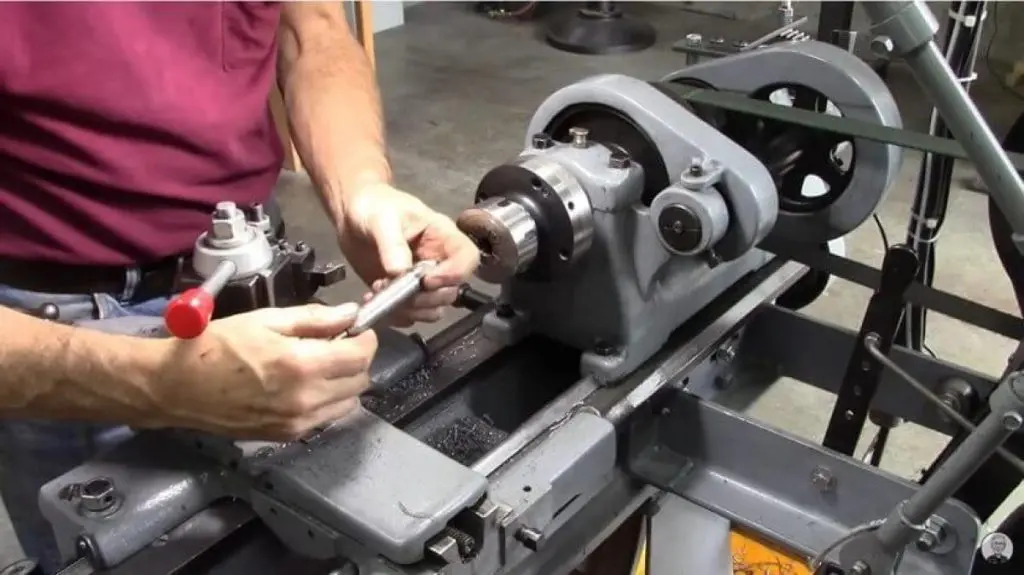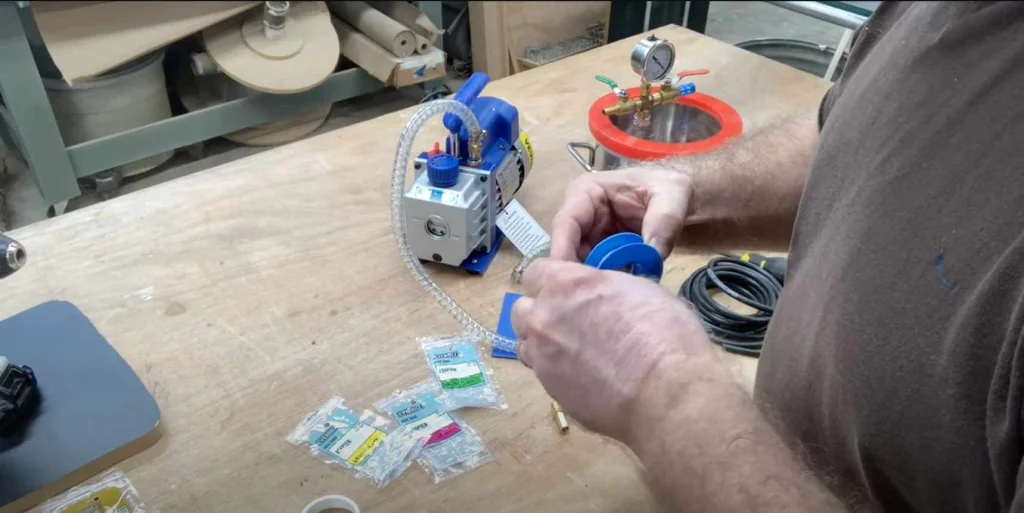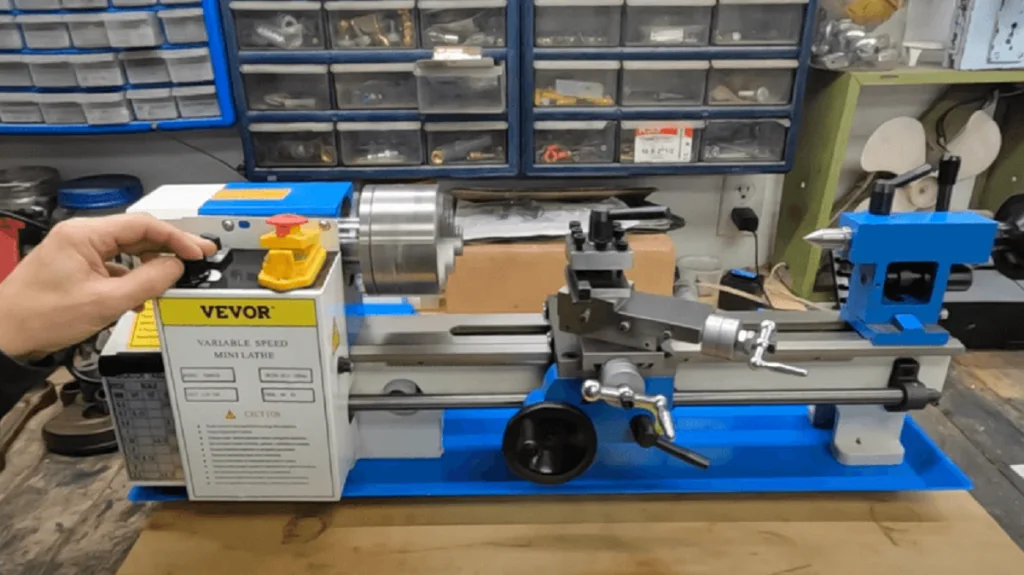A workshop’s efficiency hinges significantly on the power of its air compressor, with CFM (cubic feet per minute) serving as a vital metric. CFM determines the compressor’s ability to deliver a consistent airflow, impacting tasks like powering pneumatic tools or maintaining pneumatic systems. Inadequate CFM can lead to delays, reduced productivity, and compromised quality of work.
VEVOR air compressors emerge as a dependable solution. Renowned for their reliability and performance, VEVOR compressors offer robust CFM outputs tailored to various workshop demands.
This guide will explore strategies to boost CFM on air compressors, empowering workshops to increase efficiency and production. Whether tackling DIY projects or managing industrial operations, optimizing CFM ensures your air compressor keeps pace with your demands, enhancing productivity and delivering superior results. Let’s explore how to maximize your workshop’s power with VEVOR air compressors.
Table of contents
Understanding CFM and Its Importance
CFM, or cubic feet per minute, measures the volume of air a compressor can deliver in one minute. It is a critical metric for air compressors as it indicates their ability to power pneumatic tools, inflate tires, and operate pneumatic systems effectively.
Higher CFM becomes essential in various scenarios. For example, in industrial settings, high-powered tools like sanders, grinders, and impact wrenches require a continuous and ample supply of compressed air. Insufficient CFM can prevent these tools from operating at their full potential, resulting in reduced efficiency and potentially damaged equipment.
Even in smaller workshops or DIY settings, tasks such as spray painting, using pneumatic nail guns, or operating airbrushes require a consistent CFM to ensure smooth operation and high-quality results.
Understanding CFM and its importance is crucial for selecting the suitable air compressor for your needs.
Common Factors Affecting CFM in Air Compressors
Have you ever wondered why your trusty air compressor isn’t performing as well as you hoped? Especially when we’re talking about CFM or cubic feet per minute, which are the numbers that truly reflect the strength and efficiency of your air compressor. Think of CFM as the pulse of your air compressor’s performance; it tells you how robust and effective your machine is. Some simple, everyday factors significantly influence this vital aspect. By getting to know these factors better, you’ll be on the path to harnessing the full potential of your air compressor. Let me walk you through a friendly guide to understand these influences better.

The Role of Hose Size
Think of the hose as the highway the air travels through. If the highway is too narrow or long, traffic slows down, right? That’s precisely what happens with your air compressor. If the hose is too small or too long, it’s going to fight the air trying to pass through, slowing down your CFM. Opting for a hose just the right size makes your air compressor breathe easier and deliver stronger.
How Pressure Settings Play Their Part
Setting the pressure is like tuning a guitar. Tune it too high, and you may need to get your desired melody. Your air compressor has setting controls how much air it’s pushing through. Cranking up the pressure seems like a way to get more power, but it can make the CFM take a dip, especially if your compressor starts to struggle. It’s all about finding that sweet spot where everything’s balanced.
The Sneaky Effect of Air Leaks
Now, leaks are the nemesis in the world of air compressors. Like a sneaky puncture in a tire, leaks in your compressor system (think fittings, hoses, and seals) mean the air is escaping. And guess what? Your CFM drops. Staying on top of maintenance and watching for these traitors to air pressure will keep your compressor in tip-top shape.
Why VEVOR Compressors Stand Out
Now, onto the heroes at VEVOR who’ve been tackling these common challenges head-on:
Designed to Deliver
VEVOR compressors come with the kind of design smarts that mean your CFM doesn’t have to take a hit even if pressure conditions change. It’s like having a device that adjusts itself to give you a consistent performance, rain or shine.
Built with Care
With top-notch components, VEVOR makes leaks less of a worry. It’s the difference between using something off the shelf and something tailored just for you. Every part, be it hoses or seals, ensures your air compressor is sealed tighter than a drum, maximizing CFM.
Made for the User
Adjusting pressure settings should feel like something other than rocket science. VEVOR gets that. With user-friendly compressors, tweaking your settings to precisely what your project needs becomes a breeze.
Effective Ways to Increase CFM
Increasing CFM (cubic feet per minute) output from an air compressor is essential for improving its performance and meeting the demands of various applications. Here are some effective methods to boost CFM:
Decrease Pressure Settings
Reducing the pressure settings on the air compressor can increase CFM output. Most compressors allow users to adjust the pressure according to the tools or equipment requirements. Here’s how to decrease pressure effectively:
- Adjust Pressure Regulator: Locate the pressure regulator on your air compressor, typically found near the outlet or on the control panel. Use the adjustment knob or dial to lower the pressure setting to the desired level. Refer to the compressor’s manual for specific instructions on adjusting pressure settings.
- Monitor Tool Requirements: Different pneumatic tools and equipment have varying pressure requirements. Check the manufacturer’s specifications for each tool’s recommended operating pressure. Set the compressor’s pressure accordingly to match the needs of the tools in use, ensuring optimal performance without unnecessary pressure buildup.
- Optimize Pressure Drop: Use appropriately sized hoses and fittings to minimize pressure drop. Larger diameter hoses and shorter hose lengths reduce resistance and improve airflow, maximizing CFM delivery to the tools. Regularly inspect hoses and fittings for leaks or damage and replace them to maintain efficiency.
Add Secondary Air Storage
Installing secondary air storage tanks can increase CFM output and provide a steady supply of compressed air, especially during peak demand. Here’s how adding secondary air storage can enhance CFM:
- Increase Air Reservoir: Secondary air storage tanks act as additional reservoirs to store compressed air, allowing the compressor to replenish the supply during idle periods. This reduces the strain on the compressor motor and helps maintain consistent CFM output, even when multiple tools are used simultaneously.
- Balance Air Demand: Secondary air storage tanks help balance the demand for compressed air by providing a buffer between the compressor and the tools. This prevents pressure fluctuations and ensures a steady airflow to the tools, improving overall efficiency and performance.
- Expand Capacity: By increasing the total volume of compressed air available, secondary air storage tanks enable the compressor to handle larger tasks and applications that require higher CFM output. This flexibility allows for greater versatility in workshop operations and enhances productivity.
Upgrade Compressor Parts
Upgrading specific air compressor components can optimize performance and increase CFM output. Consider the following upgrades:
- High-Performance Pump: Upgrading to a high-performance pump with more significant displacement and faster recovery times can significantly boost CFM output. Look for pumps designed for increased efficiency and durability, delivering higher volumes of compressed air without sacrificing reliability.
- Efficient Motor: A more robust and efficient motor can improve the compressor’s ability to generate and maintain CFM output, especially under heavy load conditions. Upgrading to an engine with higher horsepower or better energy efficiency can enhance overall performance and reduce operating costs over time.
- Advanced Control Systems: Modern air compressors often feature advanced control systems and digital controls that optimize airflow and pressure regulation for maximum efficiency. Consider upgrading to a compressor with intelligent technology and programmable settings to fine-tune CFM output and adapt to changing workflow requirements.
VEVOR Compatibility with Upgrades and Enhancements
VEVOR air compressors are designed with compatibility and versatility, making them suitable for various upgrades and enhancements to increase CFM output and performance. Here’s how VEVOR compressors support upgrades:
- Universal Fittings: VEVOR compressors typically feature standard fittings and connectors compatible with a wide range of aftermarket accessories and upgrades. This allows users to customize their compressor setup with additional air storage tanks, upgraded hoses, and advanced control systems to optimize CFM output.
- Durable Construction: VEVOR compressors are built with long-lasting materials and high-quality components that can withstand the rigors of upgrades and enhancements. Whether adding secondary air storage tanks or upgrading compressor parts, VEVOR compressors provide a sturdy and reliable platform for improving CFM output and overall performance.
- Versatile Applications: VEVOR compressors are suitable for various applications, from DIY projects to industrial use, making them adaptable to upgrade scenarios. Whether increasing CFM for pneumatic tools, spray painting, or inflating tires, VEVOR compressors offer the flexibility and compatibility needed to enhance workshop efficiency and productivity.
By implementing these effective methods and leveraging VEVOR compressors’ compatibility with upgrades and enhancements, workshop operators can easily increase CFM output, optimize performance, and meet the demands of diverse applications.
How to Optimize Your VEVOR Air Compressor for Higher CFM
Why is your air compressor sometimes not up to par with your expectations, especially regarding CFM or Cubic Feet per Minute? Those numbers really talk about how strong your air compressor is—more like the heartbeat of its performance. A few everyday things play a big role in this. Getting familiar with them means you’re on your way to getting the most out of your compressor. Here’s a friendly guide to help you understand better.

The Role of Hose Size
Think of the hose as the highway the air travels through. If the highway is too narrow or long, traffic slows down, right? That’s precisely what happens with your air compressor. If the hose is too small or too long, it’s going to fight the air trying to pass through, slowing down your CFM. Opting for a hose that’s just the right size makes your air compressor breathe easier and deliver stronger.
How Pressure Settings Play Their Part
Setting the pressure is like tuning a guitar. Tune it too high, and you may need to get your desired melody. Your air compressor has setting controls how much air it’s pushing through. Cranking up the pressure seems like a way to get more power, but it can make the CFM dip, especially if your compressor struggles. It’s all about finding that sweet spot where everything’s balanced.
The Sneaky Effect of Air Leaks
Now, leaks are the nemesis in the world of air compressors. Like a sneaky puncture in a tire, leaks in your compressor system (think fittings, hoses, and seals) mean the air is escaping. And guess what? Your CFM drops. Staying on top of maintenance and watching for these traitors to air pressure will keep your compressor in tip-top shape.
Why VEVOR Compressors Stand Out
Now, onto the heroes at VEVOR who’ve been tackling these common challenges head-on:
Designed to Deliver
VEVOR compressors come with the kind of design smarts that mean your CFM doesn’t have to take a hit even if pressure conditions change. It’s like having a device that adjusts itself to give you a consistent performance, rain or shine.
Built with Care
With top-notch components, VEVOR makes leaks less of a worry. It’s the difference between using something off the shelf and tailored just for you. Every part, be it hoses or seals, ensures your air compressor is sealed tighter than a drum, maximizing CFM.
Made for the User
Adjusting pressure settings should feel like something other than rocket science. VEVOR gets that. With user-friendly compressors, tweaking your settings to precisely what your project needs becomes a breeze. This flexibility is perfect whether you’re a weekend warrior or someone clocking in and out of industrial tasks.
VEVOR compressors ensure the best performance possible when it comes to CFM, making your workspace more productive and your projects run smoother. Now that’s something to get pumped about!
FAQs
By adjusting the pressure settings, can I increase CFM on my VEVOR air compressor?
Adjusting the pressure settings can help increase CFM output. However, it’s essential to ensure that the compressor can maintain consistent CFM output at lower pressures without sacrificing performance.
Are there specific upgrades available to increase CFM for VEVOR compressors?
VEVOR compressors are compatible with various upgrades and enhancements to boost CFM output, such as adding secondary air storage tanks, upgrading compressor parts for higher performance, and optimizing airflow with advanced control systems.
How often should I check for air leaks in my VEVOR compressor?
It is recommended that hoses, fittings, and seals be inspected regularly, preferably as part of routine maintenance. Promptly repairing any leaks helps maintain airtightness and maximize CFM delivery.
What VEVOR model should I choose for my specific CFM requirements?
When selecting a VEVOR compressor model, consider factors such as maximum CFM output, tank size, and horsepower. Choose a model that aligns with your CFM needs and workshop demands to ensure optimal performance and efficiency.
Last word
In conclusion, optimizing your air compressor’s CFM output is crucial for maximizing efficiency and productivity in your workshop. By choosing VEVOR compressors, you can access reliable and versatile equipment designed to meet your CFM needs. With features like efficient design, compatibility with upgrades, and durable construction, VEVOR compressors offer enhanced performance and reliability.Take the next step toward improving your workshop’s CFM output by exploring VEVOR’s range of air compressors. Whether you’re a DIY enthusiast or an industrial professional, VEVOR has the compressor to suit your needs. Don’t settle for subpar performance—upgrade to VEVOR and experience the difference in CFM output.





